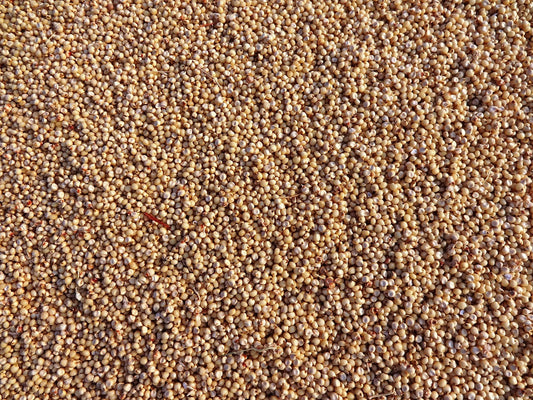Let’s talk about something that might not sound glamorous but is absolutely essential for your health: blood pressure. You’ve probably heard about it before—maybe during a doctor’s visit or while watching a commercial for heart medications—but have you ever stopped to think about what it really means? Blood pressure is the force of your blood pushing against the walls of your arteries as your heart pumps. When it’s too high, it can lead to serious problems like heart attacks and strokes. Yikes! But here’s the good news: there’s a simple, natural way to help keep your blood pressure in check, and it involves one of the most underrated groups of vegetables out there—cruciferous veggies.
You know them as broccoli, cauliflower, kale, Brussels sprouts, and cabbage. They’re often the side dishes that get pushed to the edge of the plate, but they deserve center stage. A recent study suggests that eating four servings of these green (and sometimes purple!) powerhouses every day could lower your blood pressure and reduce your risk of heart disease. Intrigued? Let’s dive into why these veggies are so special and how you can make them part of your family’s daily routine.
What Are Cruciferous Vegetables, Anyway?
First things first—what exactly are cruciferous vegetables? Think of them as the rockstars of the veggie world. They belong to the Brassica family and include familiar faces like broccoli, cauliflower, kale, cabbage, and Brussels sprouts. These veggies are packed with nutrients that do wonders for your body. For example, they’re loaded with fiber, which helps keep your digestive system running smoothly, and vitamin C, which boosts your immune system. They also contain glucosinolates, compounds that may help fight cancer. And if that wasn’t enough, they’re rich in vitamin K, which helps your blood clot properly, and folate, which supports the production of red blood cells.
So, when we say cruciferous vegetables are good for you, we mean really good for you. They’re like a multivitamin in food form, and their benefits go beyond just keeping your blood pressure in check. But let’s focus on that for now because, honestly, managing blood pressure is one of the best things you can do for your long-term health.
The Study That Put Cruciferous Veggies in the Spotlight
Here’s where things get exciting. Scientists conducted a study to see how cruciferous vegetables stack up against other veggies when it comes to lowering blood pressure. The study involved 18 adults aged 56 to 72 who had mildly elevated blood pressure. For two weeks, participants ate either four daily servings of cruciferous vegetables or four servings of root and squash vegetables (like carrots and sweet potatoes). After a two-week break, they switched groups and repeated the process. This kind of setup is called a crossover trial, and it helps researchers compare the effects of different interventions more accurately.
At the end of the study, the results were clear: those who ate cruciferous vegetables saw a drop in their systolic blood pressure by an average of 2.5 mmHg compared to the control group. Systolic blood pressure is the top number in a blood pressure reading, and it measures the pressure in your arteries when your heart beats. Even a small reduction like this can make a big difference—it translates to roughly a 5% lower risk of having a major cardiovascular event, like a heart attack or stroke. That’s huge!
Why Does This Matter for Your Family’s Health?
Now, you might be wondering, “Okay, but how does this apply to me and my family?” Great question! High blood pressure isn’t just a concern for older adults—it’s something that can affect anyone, especially if you have a family history of heart disease or other risk factors. Plus, making healthy choices early on can set the stage for a lifetime of good habits. Here’s why this study is relevant:
-
Small Changes, Big Impact : Adding a few servings of cruciferous vegetables to your meals is a simple change that can have lasting benefits. It’s not about overhauling your entire diet overnight; it’s about finding ways to incorporate healthier options gradually.
-
Family-Friendly Foods : Many cruciferous vegetables are versatile and kid-approved. Think roasted broccoli with a sprinkle of Parmesan or cauliflower rice as a low-carb alternative to traditional rice. These veggies can easily become staples in your household without much fuss.
-
Heart Health for Everyone : Managing blood pressure isn’t just about avoiding heart attacks and strokes—it’s about feeling your best every day. Lower blood pressure means better circulation, more energy, and a reduced risk of complications down the road.
How Do Cruciferous Vegetables Work Their Magic?
So, what makes cruciferous vegetables so effective at lowering blood pressure? While scientists are still figuring out all the details, they believe it has to do with the unique combination of nutrients and compounds found in these veggies. Here are a few possibilities:
-
Micronutrients Galore : Cruciferous vegetables are rich in potassium, magnesium, and calcium—all minerals that play a role in regulating blood pressure. Potassium, for example, helps balance out the effects of sodium in your diet, which can otherwise raise your blood pressure.
-
Antioxidants and Anti-Inflammatories : These veggies are loaded with antioxidants, which protect your cells from damage caused by free radicals. Chronic inflammation is linked to high blood pressure, so reducing it can have a positive impact.
-
Fiber Power : The fiber in cruciferous vegetables not only keeps your gut happy but also helps lower cholesterol levels. High cholesterol can contribute to high blood pressure, so this is another win.
-
Glucosinolates : Remember those cancer-fighting compounds we mentioned earlier? Glucosinolates may also play a role in improving blood vessel function, which can help lower blood pressure.
While we don’t yet know exactly which components are responsible for the blood pressure-lowering effects, it’s clear that cruciferous vegetables pack a powerful punch.
Tips for Adding More Cruciferous Vegetables to Your Diet
If you’re ready to give cruciferous vegetables a try, here are some easy and delicious ways to incorporate them into your meals:
-
Breakfast Boost : Start your day with a green smoothie. Blend a handful of kale or spinach with frozen bananas, berries, almond milk, and a scoop of protein powder for a nutrient-packed drink.
-
Snack Smart : Keep raw broccoli and cauliflower florets in the fridge for quick snacks. Pair them with hummus or guacamole for extra flavor.
-
Salad Swap : Instead of iceberg lettuce, use shredded cabbage or thinly sliced Brussels sprouts as the base for your salads. Add nuts, seeds, and a tangy vinaigrette for a satisfying crunch.
-
Dinner Delights : Roast Brussels sprouts or cauliflower with olive oil, garlic, and herbs for a simple side dish. Or try cauliflower rice as a substitute for regular rice in stir-fries and grain bowls.
-
Soup Sensations : Make a big batch of vegetable soup using broccoli, kale, or cabbage. Soups are perfect for meal prep and can be customized with your favorite spices and seasonings.
-
Get Creative : Experiment with recipes like cauliflower pizza crust, zucchini noodles topped with sautéed kale, or stuffed cabbage rolls. There’s no shortage of ways to enjoy these veggies!
Overcoming Common Challenges
We get it—adding more vegetables to your diet isn’t always easy. Life gets busy, kids can be picky eaters, and sometimes it feels like you’re fighting an uphill battle. Here are some tips to overcome common hurdles:
-
Start Small : If four servings of cruciferous vegetables a day sounds overwhelming, start with one or two and work your way up. Every little bit counts!
-
Involve the Kids : Let your children help pick out veggies at the grocery store or assist with meal prep. When they feel invested, they’re more likely to eat what’s on their plate.
-
Mix It Up : Variety is key to preventing boredom. Try different cooking methods (steaming, roasting, grilling) and seasonings to keep things interesting.
-
Plan Ahead : Wash and chop veggies in advance so they’re ready to grab and go. Having prepped ingredients makes it easier to whip up healthy meals.
What About the Study’s Limitations?
Before you rush out to buy all the broccoli in the supermarket, it’s important to note that this study had some limitations. For one, it was pretty small—only 18 participants completed it. Larger studies would help confirm these findings and provide more robust evidence. Additionally, most of the participants were women and white, so the results may not apply to everyone. Finally, the study only lasted a few weeks, so we don’t know how long-term consumption of cruciferous vegetables affects blood pressure.
That said, the results are promising, and there’s no harm in adding more veggies to your diet. In fact, doing so comes with a host of other benefits, from improved digestion to stronger immunity. So even if the blood pressure-lowering effects aren’t as dramatic for everyone, you’re still doing your body a favor.





